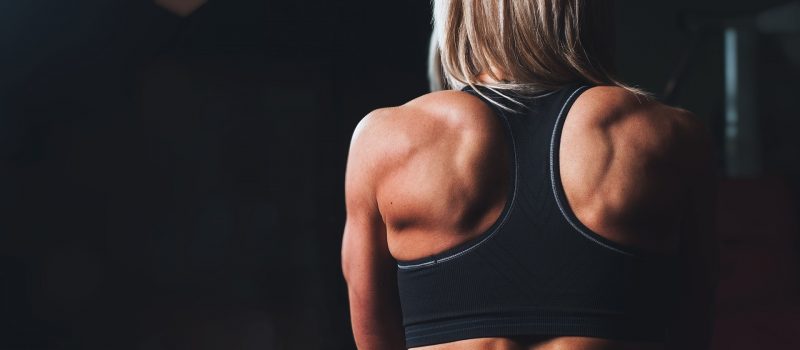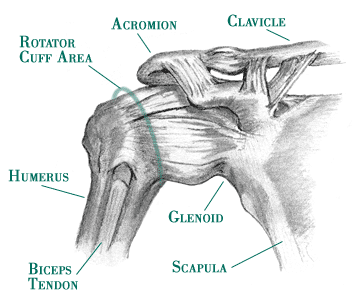
My Darn Rotator Cuff Hurts
Do you suffer from shoulder pain and live in Edmonton or St. Albert? We treat shoulder pain daily and it all starts with getting to know what can go wrong with the shoulder. So no matter where you live, let’s start with one of the more common causes of shoulder pain – the darn rotator cuff.
The shoulder is not the topic of too many dinner conversations, unless just reaching for the cheque is worse than the number of zeroes at the end of the bill. The shoulder’s only bony connection to the body is at the breast bone which makes the shoulder very mobile but not too stable. Held together by a group of ligaments and muscles including a key muscle group known as the rotator cuff, it is very susceptible to injury. When this occurs, simple activities may become tedious and painful, and even sleeping through the night becomes a chore. The golf swing, typing, washing one’s hair, and reaching for one’s wallet will make you all too aware of how important the shoulder is. It doesn’t take much to injure the shoulder, and it’s very common to wake up and wonder “ why does my shoulder hurt?”
Anatomy of the Shoulder
The shoulder is a ball and socket joint. In the shoulder the ball is larger than the socket, and this also contributes to its unstable and injury prone status. The shoulder is composed of three bones called the clavicle (collar bone), the scapula (shoulder blade) and the humerus (upper arm bone). The bones of the shoulder joint are held in place by muscles, tendons, ligaments, and a capsule. Ligaments hold bones together and tendons attach muscles to the bones. The capsule is a dense fibrous tissue that is attached to the bones and forms a sleeve around the joint.
All of these structures are at risk of injury.
Emedicine says that shoulder pain is the third most common cause of musculoskeletal disorders after low back pain and cervical pain. They estimate that the cumulative annual incidence of shoulder disorders vary from 7-25% in the Western general population. We will start the shoulder blogs off with the rotator cuff.
It’s a Rotator Cuff, not cup…
The rotator cuff is a network of four muscles and several tendons that form a housing over the top of the upper arm bone (humerus). The rotator cuff helps to lift and rotate the arm and assists to hold the ball of the shoulder within the joint socket. The rotator cuff is made up of four muscles and their tendons. These combine to form a ” cuff ” over the upper end of the arm (the ball or the head of the humerus). The four muscles of the cuff (supraspinatus, infraspinatus, subscapularis, and teres minor muscles) begin at the back of the shoulder blade. The unit is attached on the side and front of the shoulder through a single tendon.
How Did I Hurt My Cuff?
The rotator cuff can be injured from a single traumatic injury such as a fall or forceful impact such as occurs during a fracture of dislocation. Most injuries, however, are the result of overuse of these muscles and tendons over a period of years. People who are especially at risk for overuse are those who engage in repetitive overhead motions. These include participants in sports such as baseball, tennis, weight lifting, and rowing. In patients of middle to advanced age, degenerative wear and tear on this group of muscles and their tendons will often manifest as inflammation, restriction and partial and/or full tears.
“But I don’t remember doing anything”
In the event of pain arising for no apparent reason, there are often 3 major structures that may be involved. In our experience the rotator cuff, bursa and capsule are often the culprit. Most often due to overuse or wear and tear, pain can occur in each of these structures out of the blue. Each problem has its own treatment, and identifying the “at fault” structure is a necessary precursor to effective management. We will elaborate on the other shoulder injuries in future blogs as well as the pathology related to different inflammatory conditions, so stay tuned.
Maybe it happened like this:
As always, seeing a medical professional such as your physician or physiotherapist can help you get back into the swing. At Leading Edge Physiotherapy in St. Albert and Edmonton we believe that “Your Shoulder Shouldn’t Hurt!”
In Health, Grant Fedoruk
This information is not meant to replace the advice or treatment of a qualified physician or physiotherapist. It is meant for information only. Please seek an assessment and discuss your treatment options with your caregiver prior to making a decision about your treatment path.

